Whiskey
The Ultimate Corn Whiskey Recipe (Distilling Bourbon)
As you advance in the home distilling craft, it’s always a terrific idea to experiment with fun and exciting recipes. One of the best recipes worth giving a try is corn whiskey.
It’s a favorite amongst most home distillers because it helps them create a spirit that closely resembles their favorite commercial brands.
The mash bill comprises corn and barley, which ensures the starch converts to fermentable sugars to produce a decent final product.
In this post, we’ll provide step-by-step instructions so you can make a delicious and authentic whiskey. Let’s dive in!
Table of Contents
What Is Corn Whiskey?
Corn whiskey is a spirit made mainly from corn – at least 80%. The commonly used variety is yellow dent No.1 or No.2, and the mash is distilled at no more than 80% ABV (160 proof). Once distilled, the spirit is aged in new, uncharred, or used oak barrels.
It’s a whiskey of American origin. In fact, the hub for corn whiskey is Tennessee and Kentucky.
What Is The Best Corn To Use?
The proper answer to this question is, it depends on what you’re trying to achieve.
Most commercial brands use yellow dent No.1 or 2. It’s cheaper, readily available, and does produce a smooth drink.
There is also heritage corn, referred to as heirloom or Indian corn. It comes in a plethora of colors and is mainly used by craft distillers to produce an authentically unique spirit.
So, to answer your question, if you’re looking to create a decent drink, you can use dent corn.
If you have a few extra bucks to spare, you can add a few cobs of the heirloom flint corn to create a myriad of fruity and spicy notes.
Malted Corn Vs Regular Corn
Malted corn is corn that’s boiled or moistened and left to germinate. The sprouting process is halted by drying the shoots in a furnace.
Drying the corn prevents the produced enzymes from getting used up by the growing plant; they are necessary to convert starch to fermentable sugars.
Malted corn is often used to make beer and whiskey.
Regular corn, as the name suggests, is one that hasn’t been boiled or sprouted in any way. It’s the usual yellow corn found at your grocery store.
How To Make Corn Whiskey (Our Ultimate Guide)
Before you embark on this fun pursuit, it’s always best to ensure you have all the required equipment and ingredients at hand.
Here’s a list of everything you’ll need.
Equipment Needed
- Grain grinder
- Hydrometer
- Fermenter
- Sterilized glass jars
- Pot still
- Stainless steel pot
- Thermometer
- Oak barrel or oak chips/cubes
Ingredients
- 8.5 pounds (4kg) of yellow dent corn
- 1.5 pounds (1kg) of malted barley
- 1 packet whiskey or bread yeast
- 5 gallons (19 liters) of water
Making a Mash
Crushing the corn
Grinding the corn makes it easier for the starches to be released when you boil it. Using the grain grinder, crush the corn until it resembles coarse flour.
Also, grind the barley just until it cracks open.
Boiling the corn
Now that you’ve cracked open your corn and barley, it’s time to get them cooking. Follow the steps below to boil your corn.
- Pour the water into the pot and heat it to 70℃ (158℉).
- Pour the corn into the pot.
- Stir every 5 minutes until the temperature drops to 67°C (152°F).
- Stir in the barley.
- Allow the mixture to sit at 65℃ (149℉) for 60-90 minutes.
- Stir every 10-15 minutes and ensure the temperature doesn’t drop below 61℃ (141℉).
- Remove the lid and let the contents cool to 25℃ (77℉).
Starch Conversion
Because barley has high diastatic power, it will convert the starches in the corn to fermentable sugars.
So, once cooled, the starches will have converted into sugars.
Fermentation
A few steps go into preparing the mixture for fermentation. This ensures you harness the power of your wash to produce the ideal ABV.
Depending on the temperature in your environment, it can take up to 2 weeks for the wash to ferment.
Follow these steps to ferment your wash.
Yeast Starter
Making a yeast starter allows viable cells to multiply, helping kickstart fermentation.
Here’s what you’ll need to make a 2-liter starter.
- 200 g dry malt extract (DME)
- 2 liters of water
- ¼ tsp yeast nutrient (optional)
- Sanitized glass jar
- Sterilized funnel
- A bucket filled with ice cubes and water
- Ice cubes
Instructions:
- Pour the DME and yeast nutrient (if using) into a bowl. Combine well.
- Pour the water into a pot and put the pot onto a stove.
- When the water begins to boil, add the DME mixture.
- Let the solution cook for 15 minutes on medium heat.
- Stir occasionally to ensure there aren’t any clumps.
- Strain the mixture into the jar.
- Place the jar into the bucket.
- Check the temperature of the starter. When it drops below 80℉ (27℃), add the yeast.
- Give it a good shake.
- Let it sit for 24 hours.
Straining
- Pour the wash into a bucket.
- Once the solids have settled, siphon the mixture into the fermenter.
- To aerate the mixture, stir well.
- Measure the specific gravity and take a temperature reading.
- Add your yeast starter when the temperature reaches 75-85℉ (23-29℃).
- Place the fermenter in a room with temperatures of 18-25℃ (64-77℉). Attach the airlock.
- When the airlock stops bubbling, the wash is ready to hit the still.
But before that, let’s clarify the wash.
Clarifying
Clarifying is a process that involves removing yeast sediments that might scotch during distillation. You can clarify the wash by siphoning it into a clean bucket.
Distilling the corn wash
Distilling your corn wash is a two-part process: performing a stripping and a spirit run.
Here’s how to distill your wash.
Stripping run
For this distillation process, you’ll run your still fast at the highest temperature your still can manage.
Follow the steps below to start.
- Put your wash in the still.
- Turn up the heat on your still to the max.
- Start running cooling water to the condenser before any vapor is produced.
- When the still reaches the highest heat, start collecting your distillate.
- Keep collecting the distillate until the temperature of your still reaches 207°F (97℃).
- Turn off the heat and allow the still to cool completely.
Spirit Run
Distilling your whiskey requires careful monitoring from your side. You’ll be making cuts to prevent collecting any harmful chemicals.
Here’s how to perform a spirit run.
- Add your low wines into the still.
- Turn on the heat source.
- Let the vapors start condensing into liquid
- Make sure glass jars are lined up to start making cuts.
Making Cuts
Making cuts is an essential part of distilling that lets you keep only what you need and discard any non-consumable liquid.
Label your jars from 1-10. Collect every 250ml distillate into individual containers.
Here’s a brief overview of making cuts.
- Foreshots and heads: Methanol boils at 168 °F. And since this is the stuff you want to get rid of, you can start collecting your foreshots and heads when the temperature of the still reaches this heat. In general, 250ml per 5 gallons is what you’d collect as your foreshots and heads.
- Hearts: Ethanol boils at 171 °F, and herein lie the hearts. You can start collecting them when the temperature increases to 179 (depending on your still). Collect the hearts until you get an ABV of below 45%.
- Tails: Lastly, you’ll collect the tails. Usually, when half a gallon of alcohol remains in your still, the tails exit the still. They often smell like cardboard or some kind of burn.
The hearts is where the good stuff is, so you’ll age that part of the liquid and let it mature.
Aging
Aging and oaking are not only about color. It’s a great way to release the caramel, vanilla, and fruity flavors and aromas. To allow your whiskey to mature, you can use two methods: aging in barrels or using inserts.
Here’s how to apply both these methods.
Aging in barrels
- Fill the barrel with 55% ABV spirit and place the barrel in a cool place away from direct sunlight.
- Monitor your spirit every 2 weeks and rotate the barrel every month to help blend the whiskey.
Aging Using Inserts
The more oak you use, the more robust the spirit. First, you’ll get some American or French oak. Follow these steps to age whiskey using inserts:
- Dilute your distillate to 45-55% ABV.
- Pour 1 liter of the spirits into a glass jar.
- Add 20-30 grams of oak chips into the jar. If you’re using cubes, add 8 cubes.
- Cover the top of the jar with a coffee filter and keep the filter in place using an elastic band.
- Taste the whiskey every two weeks until the desired flavor is achieved. Aging can take up to three months.
- When the spirit tastes as desired, strain the whiskey into a glass jar using a cheesecloth or coffee filter. Straining prevents chips from entering your finished product.
- Seal the jar and store it in a dark, cool room.
Frequently Asked Questions
How much moonshine will 5 gallons of mash make?
A 19L (5-gallon) mash will yield roughly 2L (1/2 gallon) of whiskey. This is a rough guide but in reality the efficiency will depend on many factors such as the wash ABV, your yeast’s attenuation, the cuts you make, and the losses in your barrel or oak.

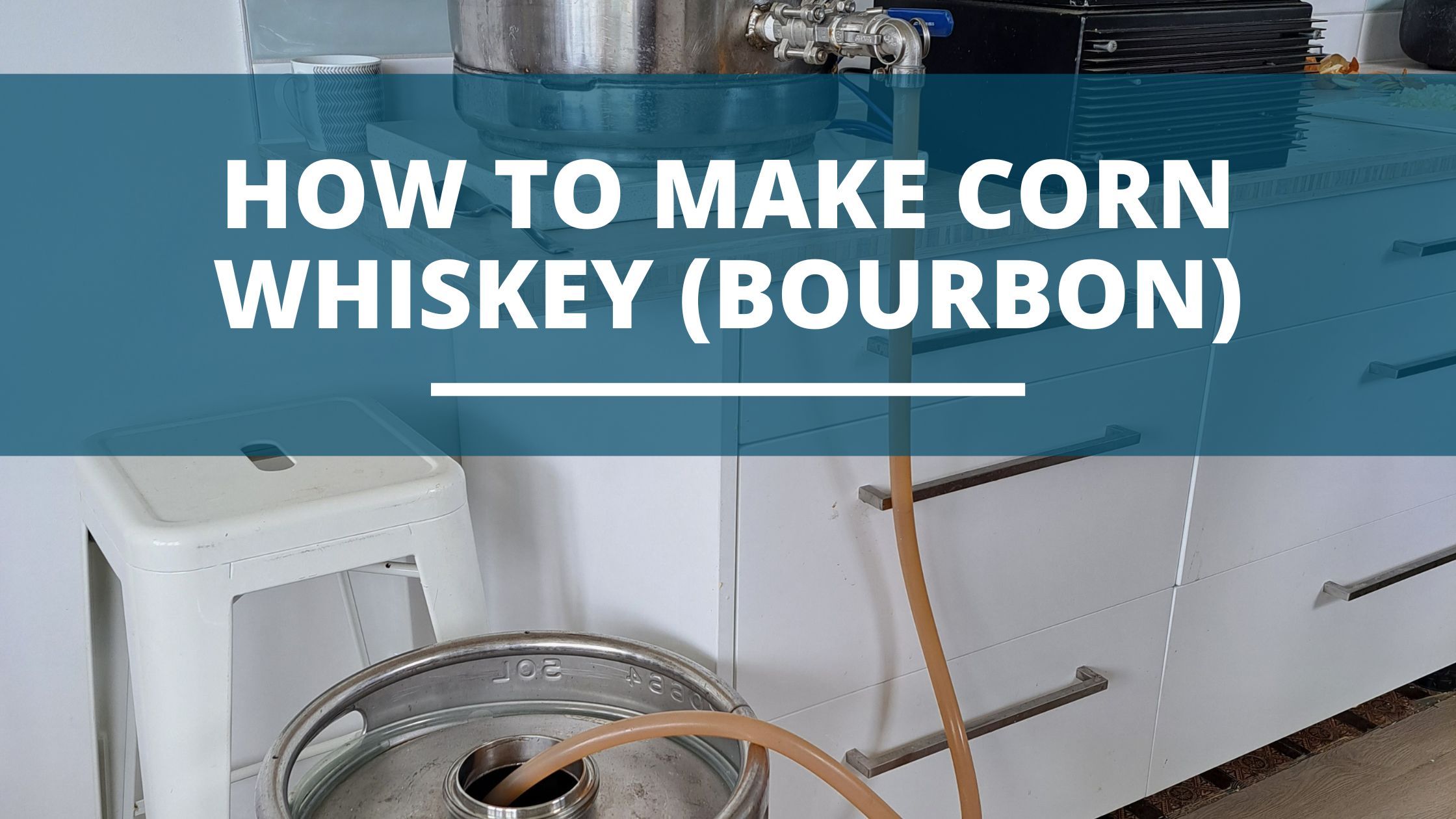

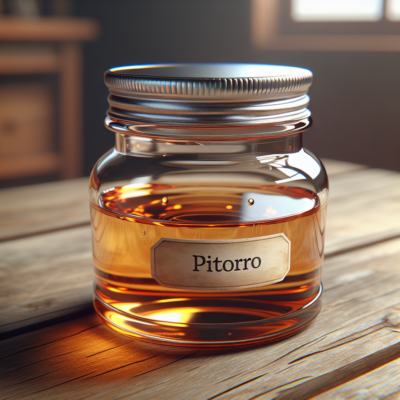
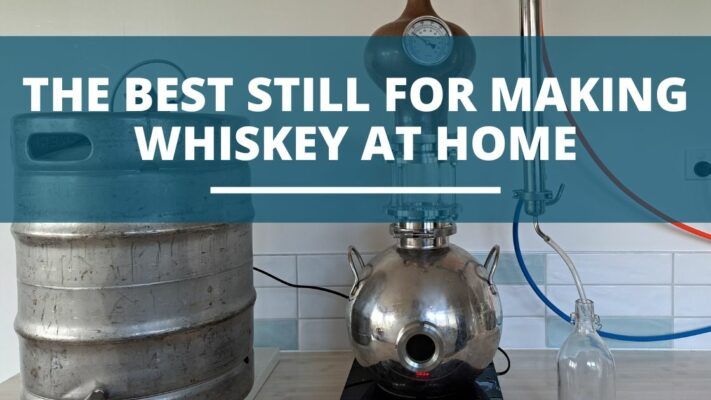

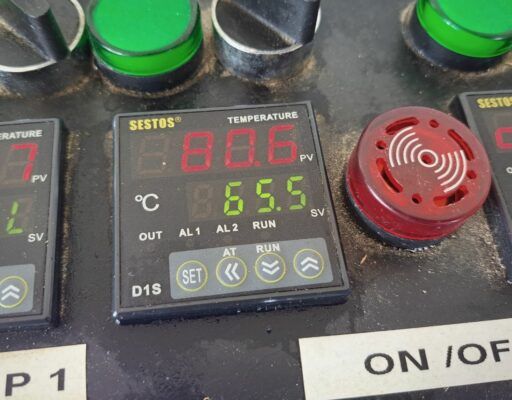
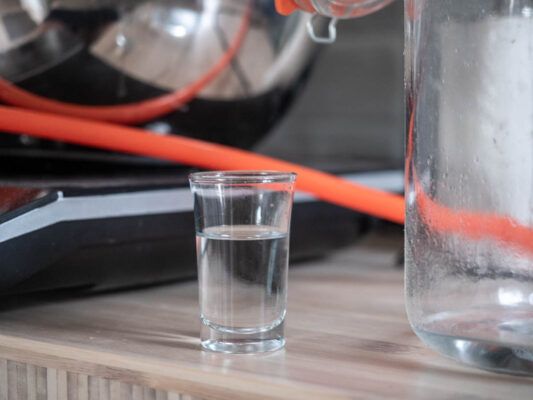

Please am happy to read this from you. Now how can I get this Items to start my own Whiskey. Am leaving in Vienna Austria Europa. I will like to go back to my Country Ghana to start this work. Hope to hear from you.
Can you cook the corn (cracked or whole) and then use an immersion blender on it to break it up instead of using a finer ground corn?
You potentially could but i wouldn’t for a few reasons.
It’s going to throw off your mash times.
It’s also going to produce more of a porridge consistency that might clog your sparge.
Finally, i wouldnt trust the immersion blender to break up the corn evenly, potentially leading to poor conversion and low efficiency.
If you do try this please report back! I’d love to hear how it goes 🙂